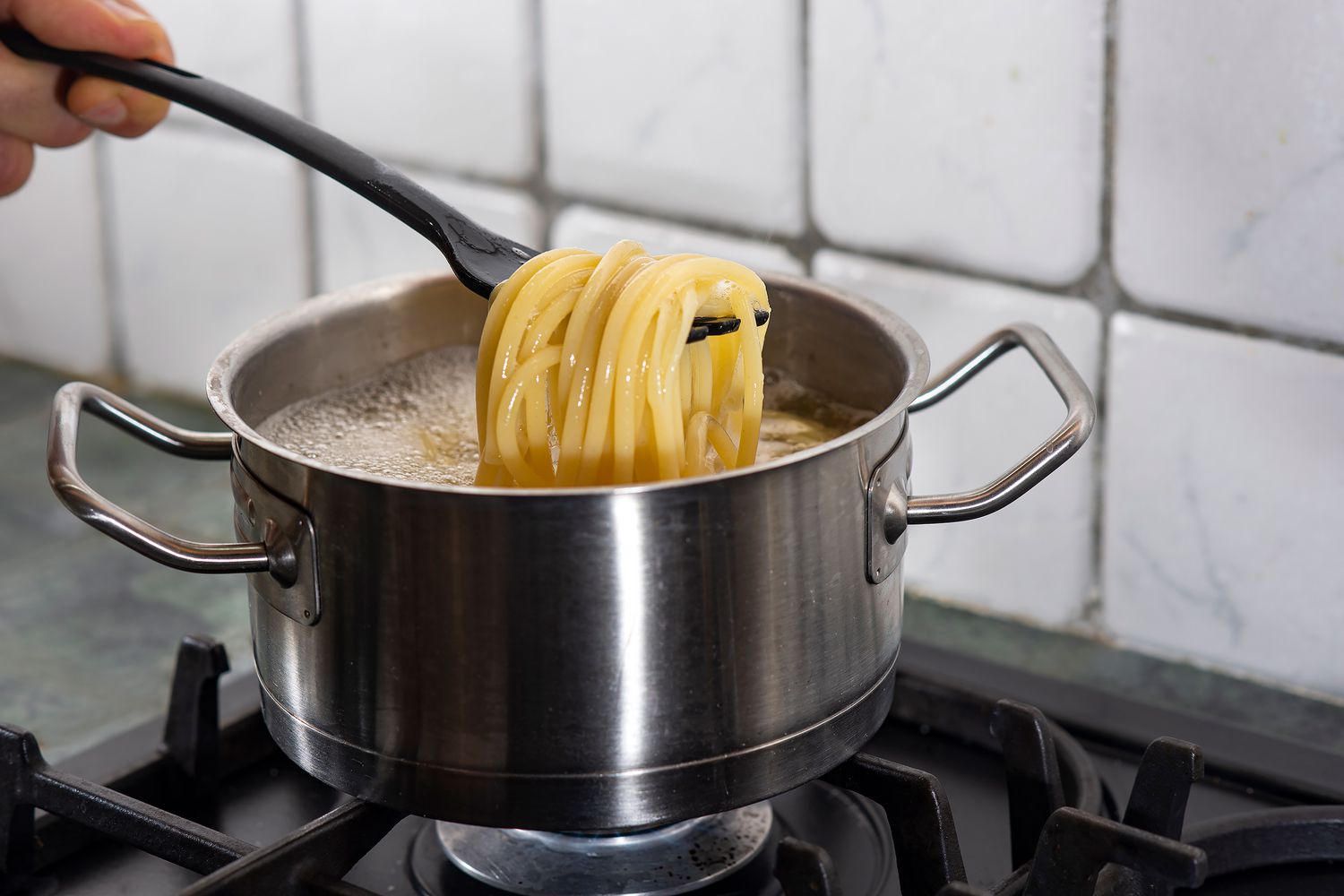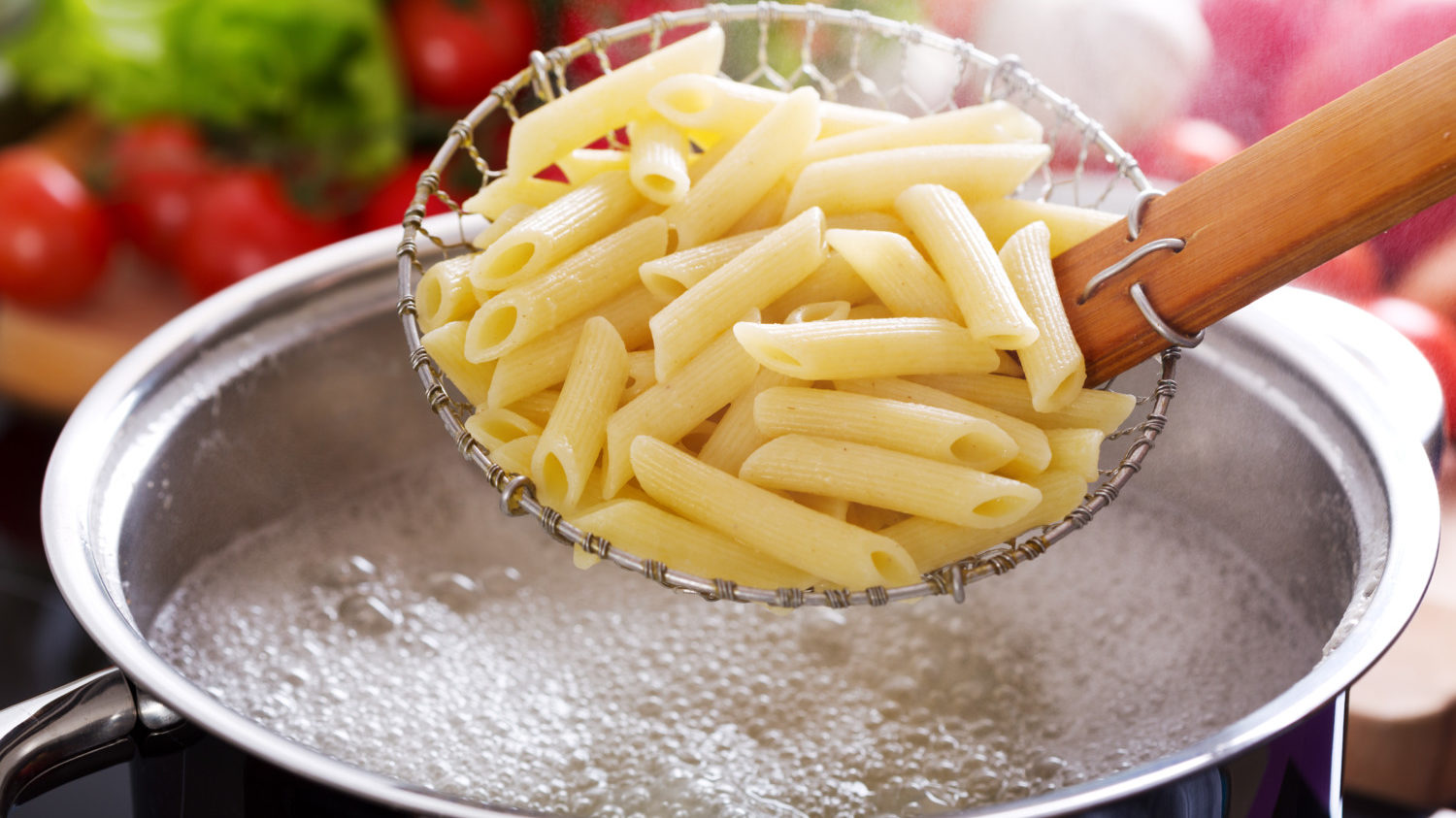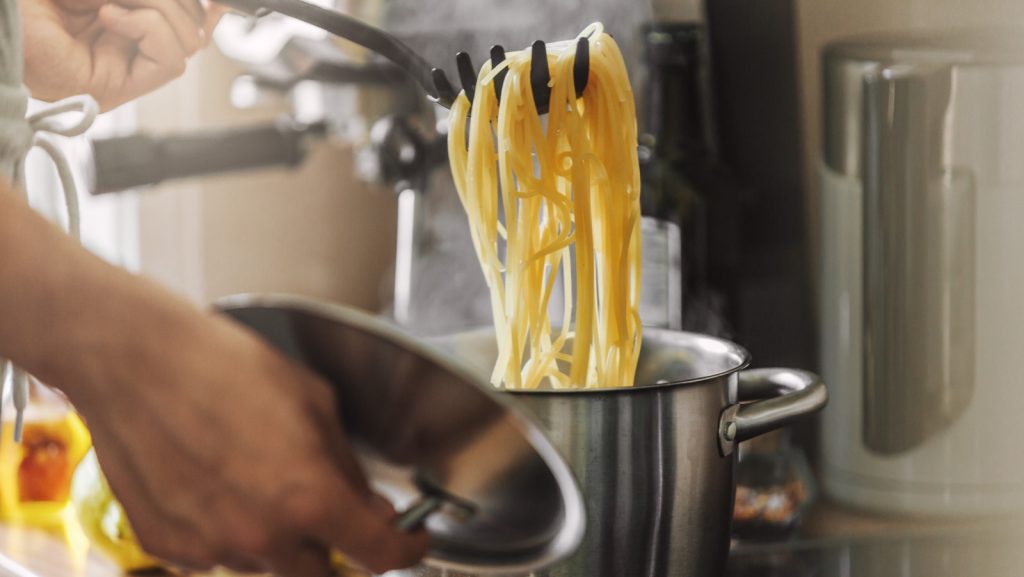The age-old tradition of flinging pasta against the wall to test its doneness may have entertained many, but let’s set the record straight – it’s a complete myth. Contrary to popular belief, sticky noodles clinging to your kitchen wall signal overcooked pasta. The real secret lies in achieving that coveted al dente texture, a phrase derived from Italian meaning ‘to the tooth.’
Cooking pasta to al dente perfection involves maintaining a delicate balance of texture – tender with just the right amount of resistance when bitten. While the wall-throwing method may be entertaining, it’s not the most reliable gauge for achieving the ideal pasta texture.

How to tell when your pasta is al dente:
Save yourself time and ensure a consistently satisfying pasta experience by understanding the science behind al dente. According to Cook’s Illustrated, pasta is essentially starch bonded together by proteins. As it simmers in a pot of boiling, salted water, the starches absorb liquid. While some starch molecules burst, releasing their components into the water, the inner starches remain less saturated, indicating a less-cooked state – the al dente sweet spot.
So, how do you know when your pasta is perfectly al dente without resorting to the wall test? Start by paying close attention to the cooking process. Look for a subtle change in colour, as the pasta reaches the right level of doneness. Bite into a piece, and if you observe a faint touch of white at the center of the noodle, you’re on the right track. The colour should be light, avoiding a stark difference, which could signal undercooking.

The al dente pasta should be somewhat firm but never crunchy. To save yourself from multiple tastings, begin checking a little earlier than you think it should be done. By monitoring the pasta’s colour and the time it spends in the pot, you’ll hone your skills in achieving the perfect al dente state without the need for unconventional wall-flinging antics.
So the next time it’s pasta night, bid farewell to pasta myths and embrace a more refined approach to achieving al dente perfection. Your palate will thank you for the consistently impeccable texture, elevating your pasta dishes to a new level of culinary excellence.
ALSO SEE: Alternatives for cream on pasta night
Feature image: Pexels

